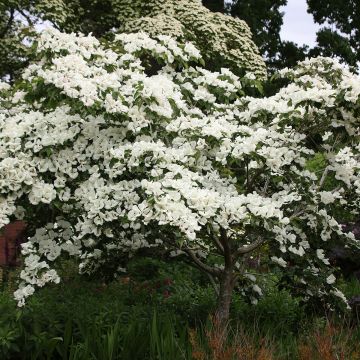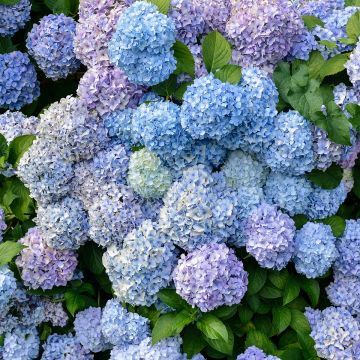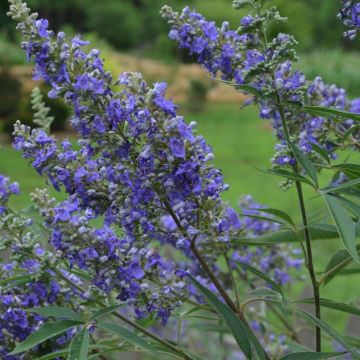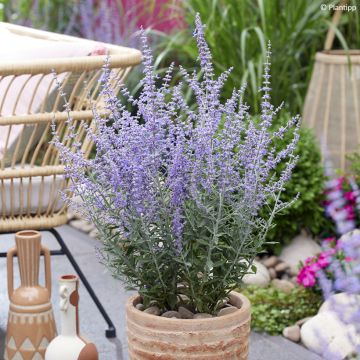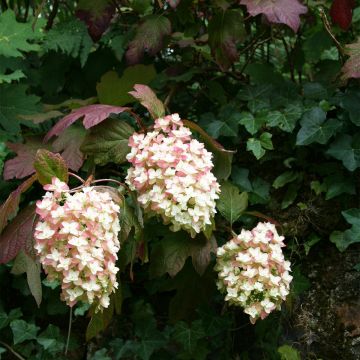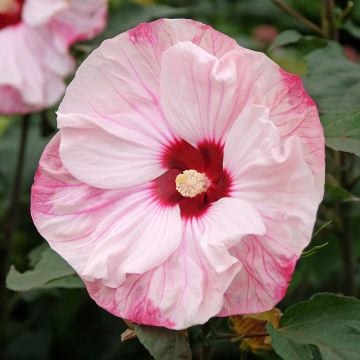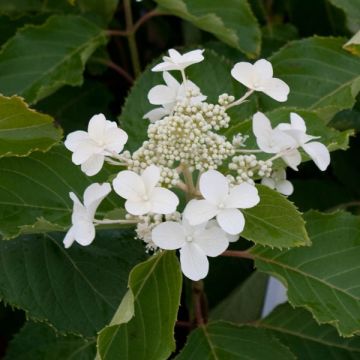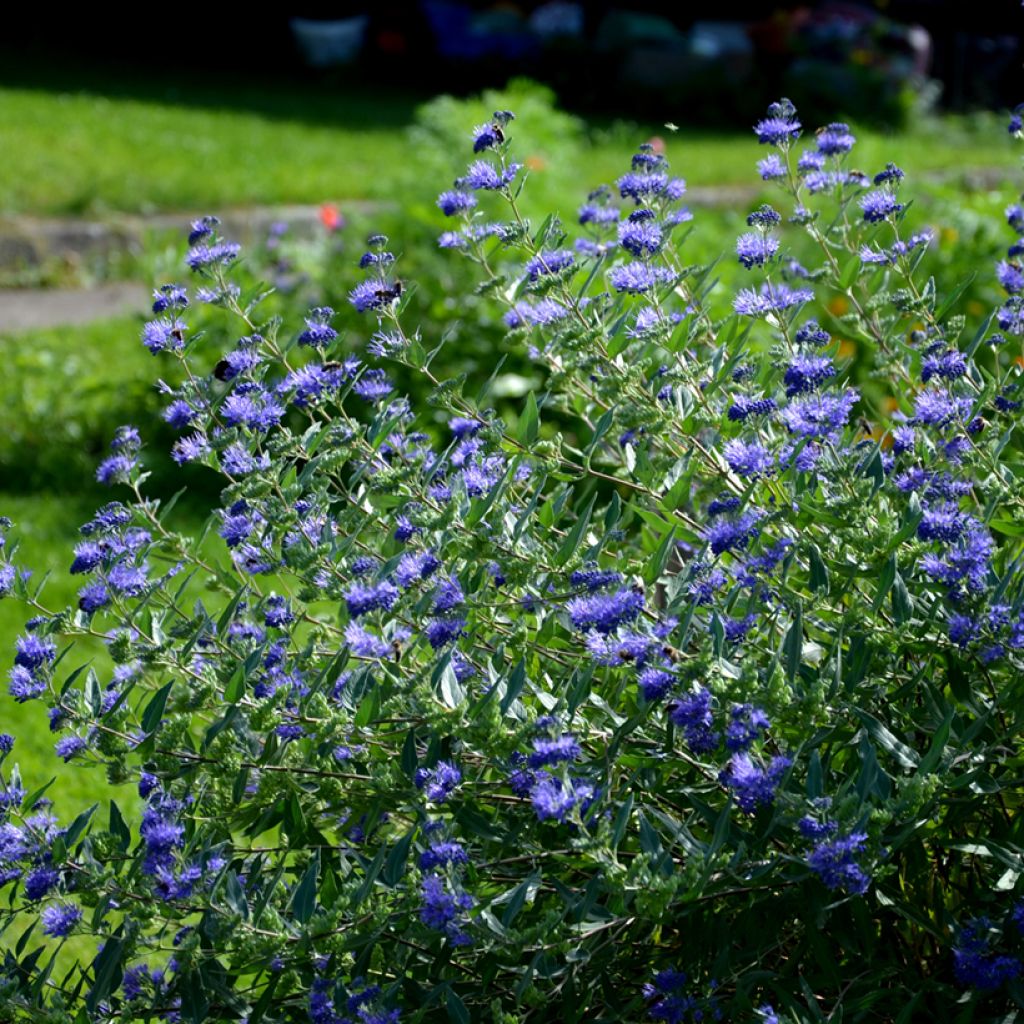

Caryopteris clandonensis Heavenly Blue - Bluebeard
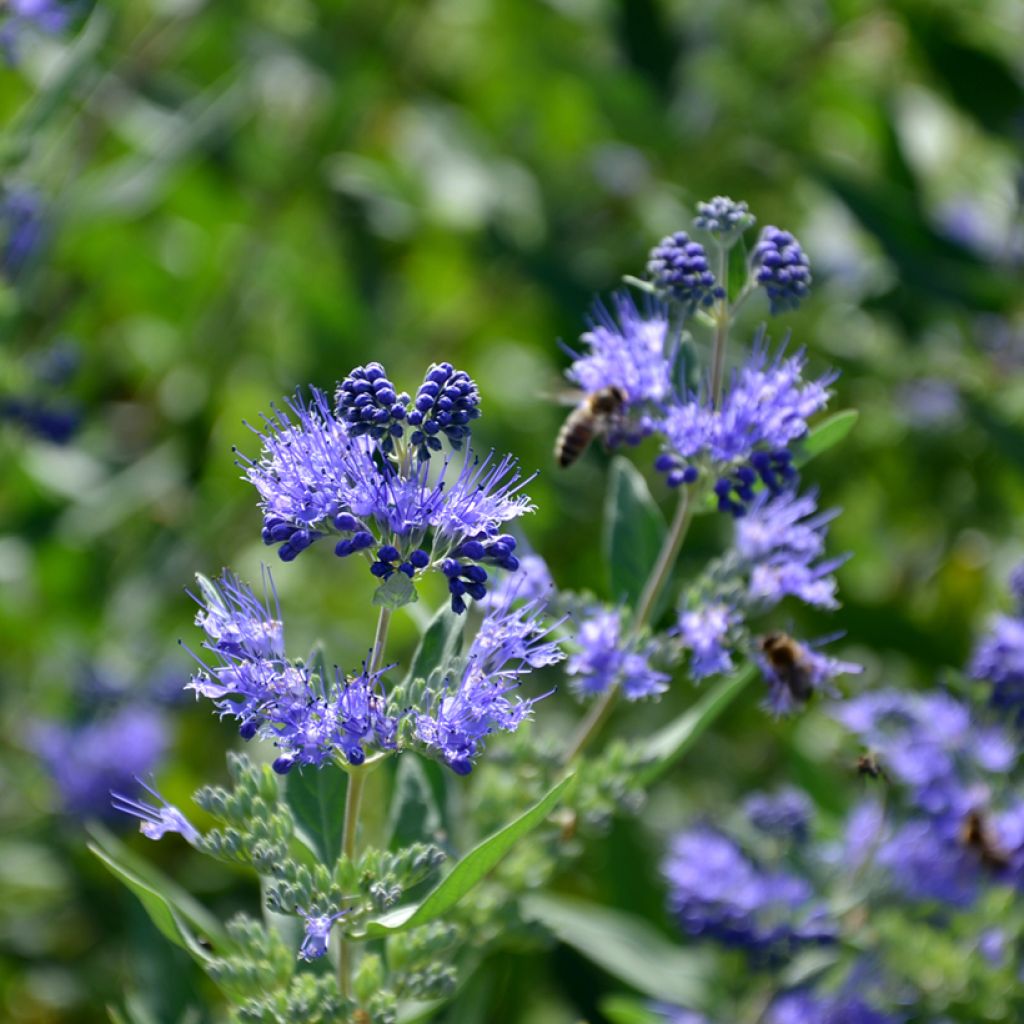

Caryopteris clandonensis Heavenly Blue - Bluebeard
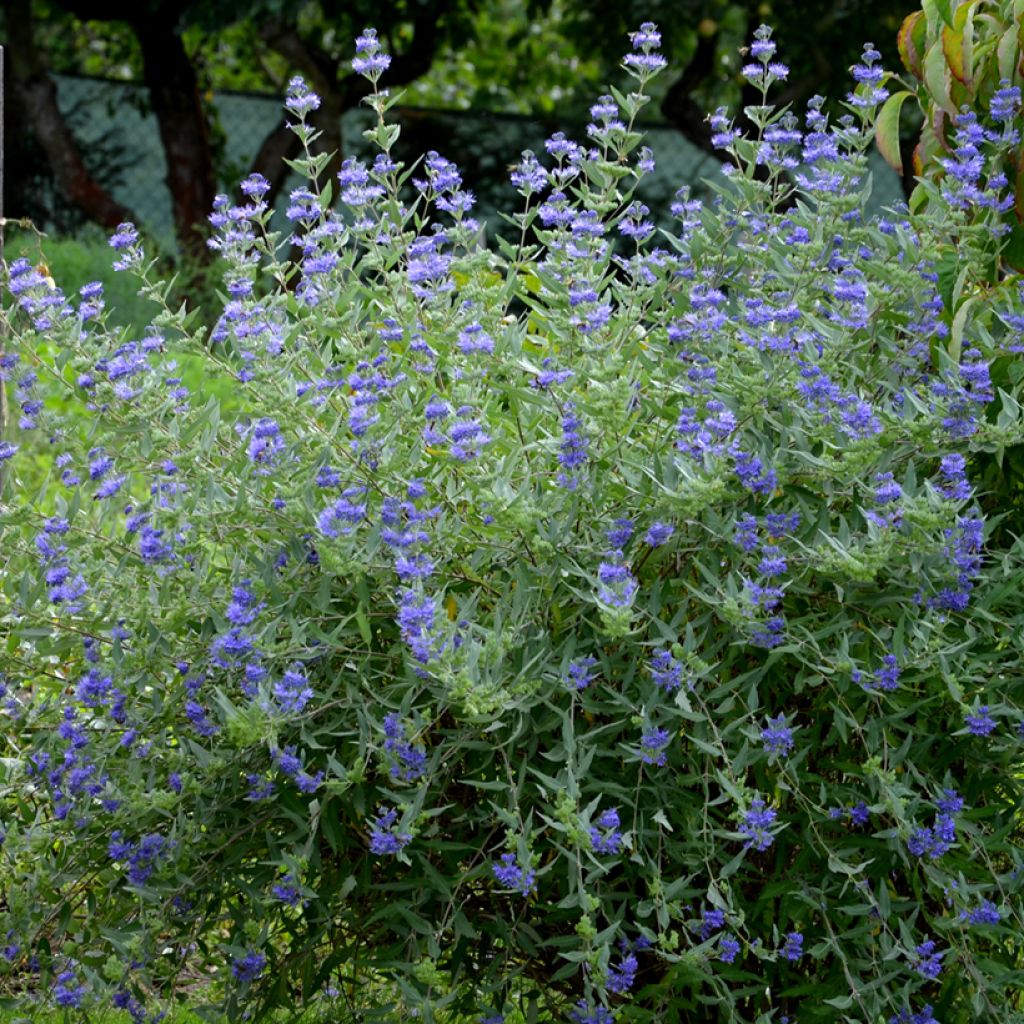

Caryopteris clandonensis Heavenly Blue - Bluebeard
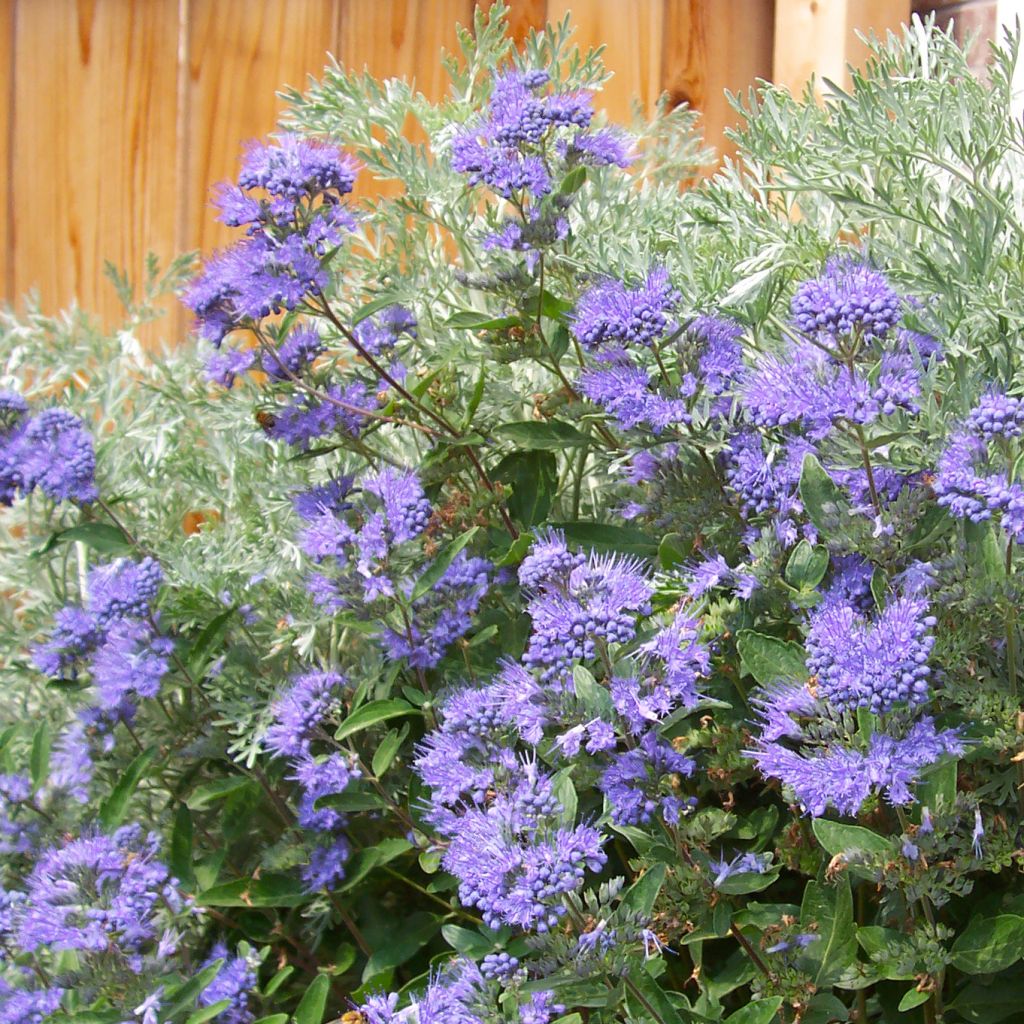

Caryopteris clandonensis Heavenly Blue - Bluebeard
View more pictures
Hide images
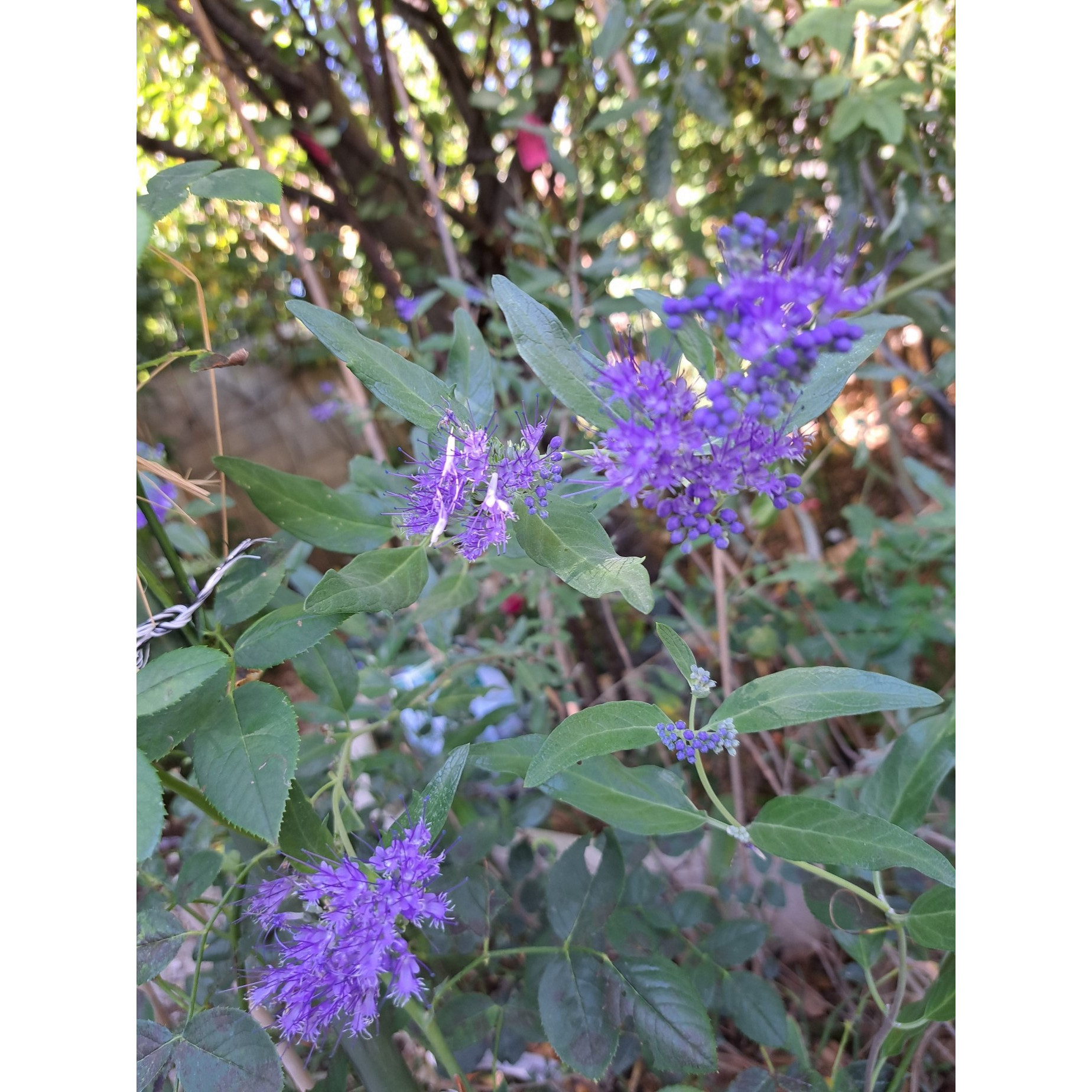
Thierry P.

September flowering - image 2
Thierry P. • 84 FR
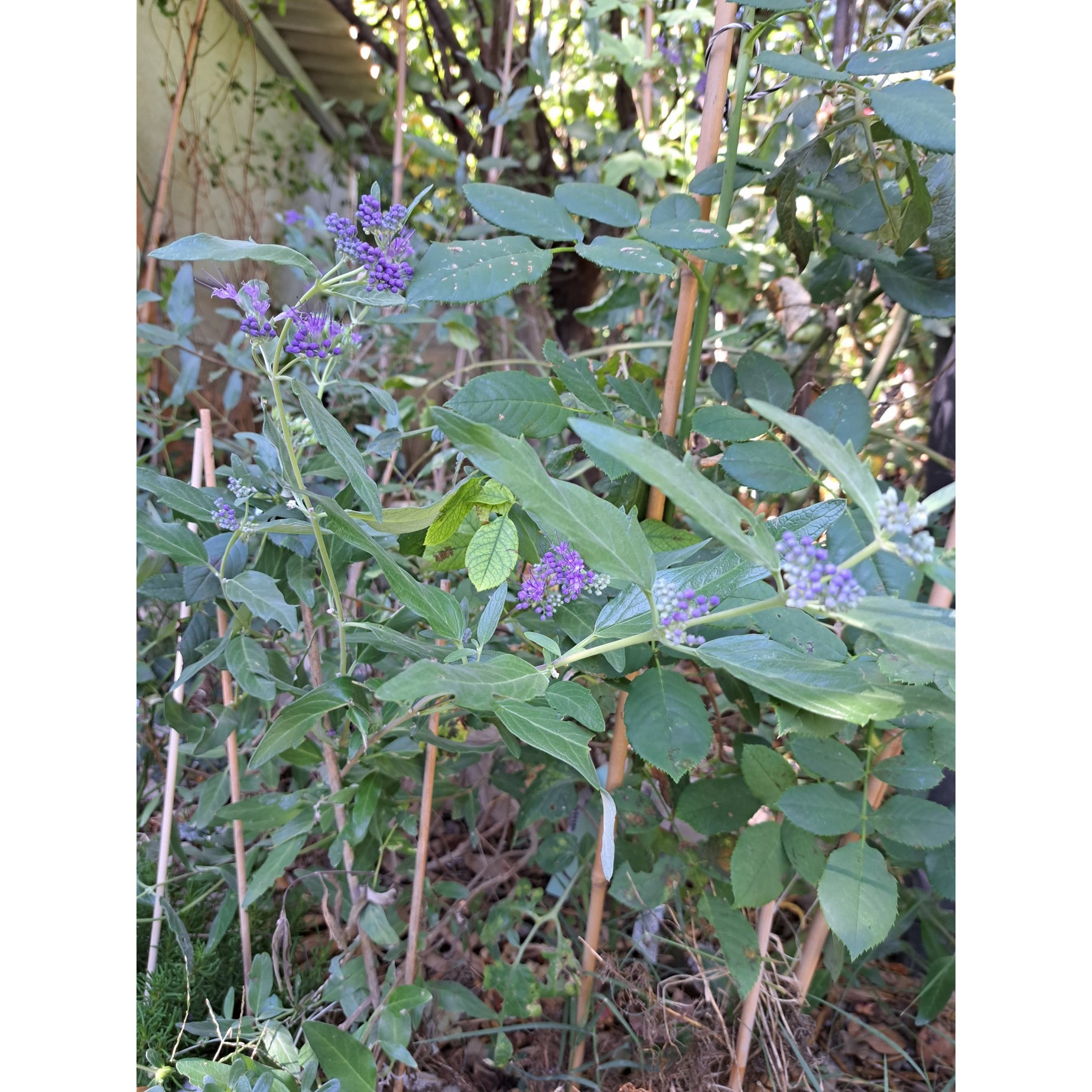
Thierry P.

September flowering - image 1
Thierry P. • 84 FR
Caryopteris clandonensis Heavenly Blue - Bluebeard
Caryopteris x clandonensis Heavenly Blue
Bluebeard, Blue Spirea, Blue Mist Shrub
Rapid development, the little flowers are very cute. Exposure to full sun well tolerated.
Alix, 25/09/2025
Special offer!
Receive a €20 voucher for any order over €90 (excluding delivery costs, credit notes, and plastic-free options)!
1- Add your favorite plants to your cart.
2- Once you have reached €90, confirm your order (you can even choose the delivery date!).
3- As soon as your order is shipped, you will receive an email containing your voucher code, valid for 3 months (90 days).
Your voucher is unique and can only be used once, for any order with a minimum value of €20, excluding delivery costs.
Can be combined with other current offers, non-divisible and non-refundable.
Home or relay delivery (depending on size and destination)
Schedule delivery date,
and select date in basket
This plant carries a 24 months recovery warranty
More information
We guarantee the quality of our plants for a full growing cycle, and will replace at our expense any plant that fails to recover under normal climatic and planting conditions.

Would this plant suit my garden?
Set up your Plantfit profile →
Description
The Caryopteris (x) clandonensis 'Heavenly Blue' is a type of shrub that was recently developed. It is distinguishable from other types of shrubs by its vigorous growth and the vibrant blue-violet colour of its summer flowers, which form dense and fluffy-looking clusters. The plant grows upright and open, with deciduous dark greenish-grey foliage on the upper side and grey on the underside. If you crush the foliage, it smells like turpentine. This plant grows best in full sun and prefers well-drained or even dry soil. It is quite hardy and can be planted in a sunny flower bed, a large rock garden, or even in a small hedge.
The Caryopteris (x) clandonensis 'Heavenly Blue' is a hybrid plant that was created by crossing the Caryopteris incana, which is commonly known as 'Bluebeard', with the more resilient Caryopteris mongolica, found in colder regions of Mongolia and northern China. All of these plants belong to the Verbenaceae family.
The 'Heavenly Blue' plant is a dense bush that can grow up to 80 cm - 1 m in height and 70 - 80 cm in width. It blooms in August-September and produces fluffy, broad, dense inflorescences at the end of its branches. These inflorescences comprise countless small flowers with the most intense blue colour observed in caryopteris, with prominent stamens. This plant is beautiful to butterflies because of its nectar and honey, and it releases a powerful aroma with resinous notes when its small, thin, ovate leaves are crushed. The deciduous foliage is arranged opposite each other on straight stems and has irregularly dentated edges. The leaves are greyish-green, quite dark on the upper surface, while the lower surface is fuzzy and more greyish.
Caryopteris, also known as 'Heavenly Blue', is a shrub that can create low hedges. It does well in the company of other low-maintenance summer-flowering shrubs, such as yellow and orange potentillas, chamomiles, dwarf blue conifers, ceratostigma plumbaginoides, lavender, dwarf buddleias, and shrubby salvias.
In late summer, caryopteris can be paired with sunflowers, evening primroses, Epilobium canum, Aster turbinellus, or other early-blooming asters to create a colourful scene. If you group three of these shrubs and surround them with vibrant perpetual roses, the result is a stunning display of complementary colours and styles that climaxes in September.
Report an error about the product description
Caryopteris clandonensis Heavenly Blue - Bluebeard in pictures


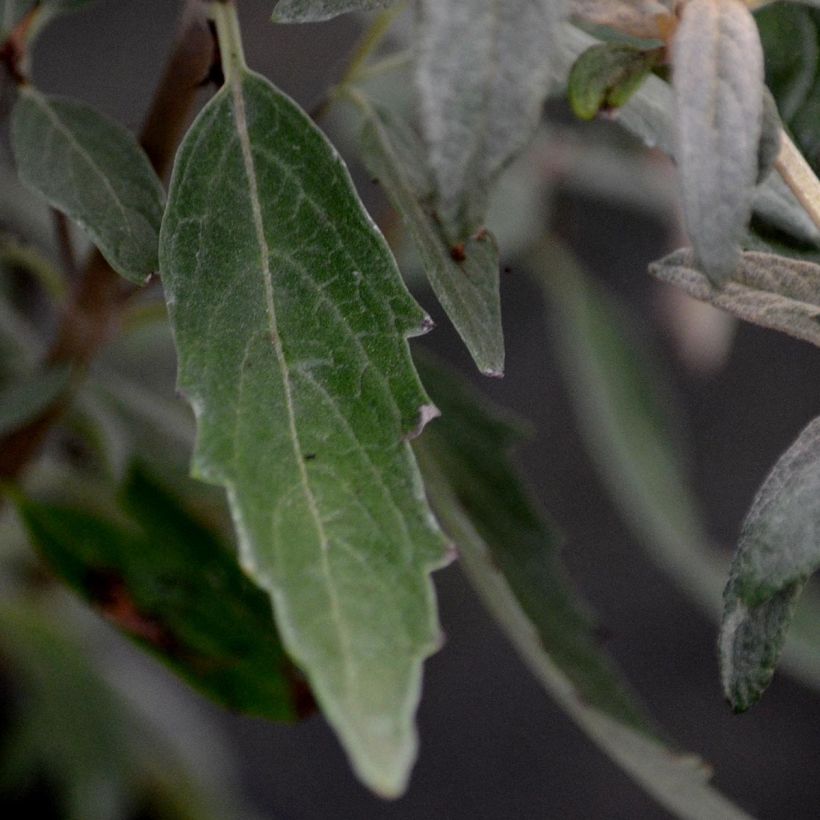



Plant habit
Flowering
Foliage
Botanical data
Caryopteris
x clandonensis
Heavenly Blue
Verbenaceae
Bluebeard, Blue Spirea, Blue Mist Shrub
Cultivar or hybrid
Planting and care
Caryopteris is a plant that requires sunny and well-drained soil to thrive. For those living in colder regions, it is best to plant the caryopteris early in autumn or spring when there is a lot of sunlight. The soil should be light and well-drained, whether rocky or sandy. However, the soil should also be relatively deep. While caryopteris can tolerate limestone, it grows more beautifully in humus-bearing soil. During winter, it is essential to avoid waterlogged soil as it can significantly affect the plant's hardiness. In well-drained soil, this plant can withstand temperatures as low as -12 to -15°C (10.4 - 5°F). To maintain a compact habit and promote the appearance of flowers on the young shoots of the year, it is recommended to prune the plant in late winter or very early spring.
Planting period
Intended location
Care
-
, onOrder confirmed
Reply from on Promesse de fleurs
Similar products
Haven't found what you were looking for?
Hardiness is the lowest winter temperature a plant can endure without suffering serious damage or even dying. However, hardiness is affected by location (a sheltered area, such as a patio), protection (winter cover) and soil type (hardiness is improved by well-drained soil).

Photo Sharing Terms & Conditions
In order to encourage gardeners to interact and share their experiences, Promesse de fleurs offers various media enabling content to be uploaded onto its Site - in particular via the ‘Photo sharing’ module.
The User agrees to refrain from:
- Posting any content that is illegal, prejudicial, insulting, racist, inciteful to hatred, revisionist, contrary to public decency, that infringes on privacy or on the privacy rights of third parties, in particular the publicity rights of persons and goods, intellectual property rights, or the right to privacy.
- Submitting content on behalf of a third party;
- Impersonate the identity of a third party and/or publish any personal information about a third party;
In general, the User undertakes to refrain from any unethical behaviour.
All Content (in particular text, comments, files, images, photos, videos, creative works, etc.), which may be subject to property or intellectual property rights, image or other private rights, shall remain the property of the User, subject to the limited rights granted by the terms of the licence granted by Promesse de fleurs as stated below. Users are at liberty to publish or not to publish such Content on the Site, notably via the ‘Photo Sharing’ facility, and accept that this Content shall be made public and freely accessible, notably on the Internet.
Users further acknowledge, undertake to have ,and guarantee that they hold all necessary rights and permissions to publish such material on the Site, in particular with regard to the legislation in force pertaining to any privacy, property, intellectual property, image, or contractual rights, or rights of any other nature. By publishing such Content on the Site, Users acknowledge accepting full liability as publishers of the Content within the meaning of the law, and grant Promesse de fleurs, free of charge, an inclusive, worldwide licence for the said Content for the entire duration of its publication, including all reproduction, representation, up/downloading, displaying, performing, transmission, and storage rights.
Users also grant permission for their name to be linked to the Content and accept that this link may not always be made available.
By engaging in posting material, Users consent to their Content becoming automatically accessible on the Internet, in particular on other sites and/or blogs and/or web pages of the Promesse de fleurs site, including in particular social pages and the Promesse de fleurs catalogue.
Users may secure the removal of entrusted content free of charge by issuing a simple request via our contact form.
The flowering period indicated on our website applies to countries and regions located in USDA zone 8 (France, the United Kingdom, Ireland, the Netherlands, etc.)
It will vary according to where you live:
- In zones 9 to 10 (Italy, Spain, Greece, etc.), flowering will occur about 2 to 4 weeks earlier.
- In zones 6 to 7 (Germany, Poland, Slovenia, and lower mountainous regions), flowering will be delayed by 2 to 3 weeks.
- In zone 5 (Central Europe, Scandinavia), blooming will be delayed by 3 to 5 weeks.
In temperate climates, pruning of spring-flowering shrubs (forsythia, spireas, etc.) should be done just after flowering.
Pruning of summer-flowering shrubs (Indian Lilac, Perovskia, etc.) can be done in winter or spring.
In cold regions as well as with frost-sensitive plants, avoid pruning too early when severe frosts may still occur.
The planting period indicated on our website applies to countries and regions located in USDA zone 8 (France, United Kingdom, Ireland, Netherlands).
It will vary according to where you live:
- In Mediterranean zones (Marseille, Madrid, Milan, etc.), autumn and winter are the best planting periods.
- In continental zones (Strasbourg, Munich, Vienna, etc.), delay planting by 2 to 3 weeks in spring and bring it forward by 2 to 4 weeks in autumn.
- In mountainous regions (the Alps, Pyrenees, Carpathians, etc.), it is best to plant in late spring (May-June) or late summer (August-September).
The harvesting period indicated on our website applies to countries and regions in USDA zone 8 (France, England, Ireland, the Netherlands).
In colder areas (Scandinavia, Poland, Austria...) fruit and vegetable harvests are likely to be delayed by 3-4 weeks.
In warmer areas (Italy, Spain, Greece, etc.), harvesting will probably take place earlier, depending on weather conditions.
The sowing periods indicated on our website apply to countries and regions within USDA Zone 8 (France, UK, Ireland, Netherlands).
In colder areas (Scandinavia, Poland, Austria...), delay any outdoor sowing by 3-4 weeks, or sow under glass.
In warmer climes (Italy, Spain, Greece, etc.), bring outdoor sowing forward by a few weeks.

































